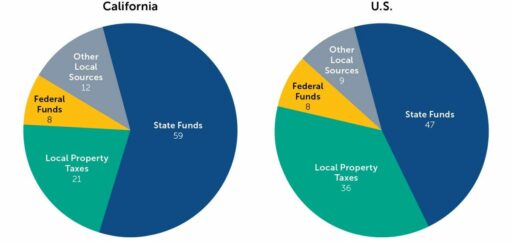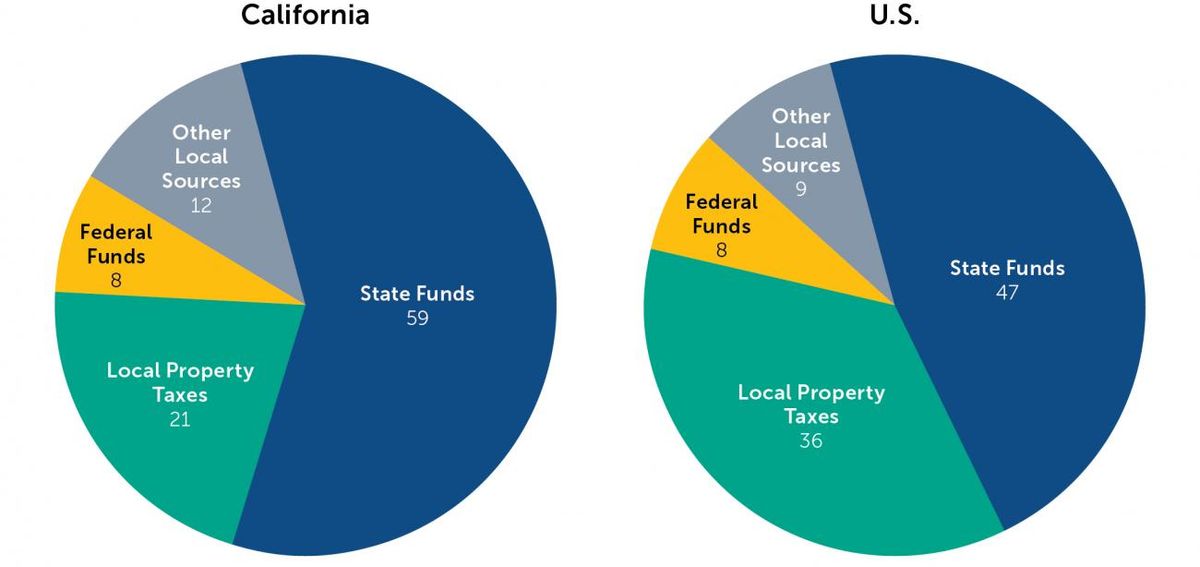Virgin Galactic Holdings, Inc. (NYSE:SPCE) has been a topic of much discussion, from its initial public excitement to its recent struggles reflected in stock performance. With a mission to pioneer space tourism, the company’s journey has been tumultuous, marked by significant stock price fluctuations, financial challenges, and operational hurdles. This article delves into the various aspects of Virgin Galactic’s business and stock performance, providing a comprehensive analysis of its trajectory in the space tourism industry.
Key Takeaways
- Virgin Galactic’s stock has seen a dramatic decline, losing about 96.33% over the last three years, significantly underperforming the S&P 500.
- The company’s financial health is concerning, with increasing negative cash flows and a heavy reliance on debt financing.
- Operational challenges, including delays in commercial flight operations and technical issues in spacecraft development, have adversely affected stock performance.
- Market sentiment is bearish, with sell recommendations and concerns over the company’s going concern risks following recent earnings reports.
- Despite current setbacks, Virgin Galactic has the potential to be a leader in the nascent space tourism industry, but its long-term viability remains a critical investment consideration.
Virgin Galactic’s Stock Trajectory: A Historical Perspective


Exponential Growth and Subsequent Decline
Virgin Galactic’s stock performance has been a rollercoaster ride for investors. Initially, the company experienced a phase of exponential growth, with share prices soaring to new heights. This surge was driven by excitement over the potential of space tourism and the allure of investing in a pioneering company in the industry.
However, the growth was not sustained, and the stock soon faced a significant decline. The downturn can be attributed to a combination of factors, including financial challenges and technical setbacks. The company’s financial health, particularly, raised concerns as net operating income and net loss both deteriorated between 2020 and 2021.
The market correction phase that followed the growth spurt has been marked by skepticism and a reassessment of the company’s valuation, leading to a bearish outlook among some analysts.
Despite the decline, Virgin Galactic remains a topic of interest in the investment community, as evidenced by discussions on its potential for transformation and growth.
Comparative Analysis with the S&P 500
When juxtaposed with the broader market index, Virgin Galactic’s stock performance presents a stark contrast. SPCE’s volatility has been significantly higher than that of the S&P 500, reflecting the speculative nature of the space tourism industry.
| Period | SPCE Return | S&P 500 Return |
|---|---|---|
| 1 Year | -60% | +10% |
| 5 Years | +15% | +75% |
The table above succinctly illustrates the disparity in returns over the past one and five-year periods. While the S&P 500 has shown steady growth, SPCE has experienced a tumultuous journey with periods of rapid ascent followed by sharp declines.
The performance of Virgin Galactic must be contextualized within the framework of high-risk, high-reward ventures. Its stock trajectory is not only a reflection of internal company dynamics but also of investor sentiment towards the nascent space tourism sector.
Key Milestones and Market Reactions
Virgin Galactic’s journey on the stock market has been marked by several key milestones that have significantly influenced investor sentiment and stock performance. The unveiling of the VSS Unity spacecraft was met with much fanfare, leading to a surge in SPCE stock as the market anticipated a new era of space tourism. However, the excitement was tempered by subsequent delays in test flights and safety concerns, which saw the stock retreat from its highs.
In response to the news snippet from Nasdaq, stating, ‘The financial performance of Virgin Galactic in 2023 presents a positive outlook. While revenue witnessed substantial growth and net losses narrowed, the path …’, investors have shown renewed interest. This optimism is reflected in the stock’s recovery, suggesting that the company’s efforts to streamline operations and control costs are beginning to bear fruit.
Virgin Galactic’s stock trajectory serves as a reminder that while milestones can drive short-term gains, sustainable performance is often dictated by the underlying business fundamentals and long-term strategic execution.
Financial Health and Business Model Concerns


Increasing Negative Cash Flows
Virgin Galactic’s financial trajectory has been marked by a persistent challenge: increasing negative cash flows. Analysis of the company’s cash flow statements reveals a concerning pattern; not only has the operating cash flow been consistently negative, indicating a struggle to generate sufficient cash from core operations, but the free cash flow has also been in the red. This trend suggests potential liquidity issues and raises questions about the company’s ability to sustain its operations without external financing.
The table below succinctly captures the company’s cash flow situation over the past three years:
| Year | Operating Cash Flow | Free Cash Flow | Ending Cash Balance |
|---|---|---|---|
| 2021 | Negative | Negative | Decreased |
| 2022 | Negative | Negative | Decreased |
| 2023 | Negative | Negative | Decreased |
The reliance on debt to maintain operations is a stark indicator of financial distress. With each passing quarter, the pressure mounts as the cash reserves dwindle, and the path to positive cash flows remains elusive.
The company’s financial health is a cornerstone for its sustainability. The increasing debt levels, coupled with the operational losses, paint a bleak picture for the future. As the company transported its first paying customers, it became evident that the journey to positive operating cash flows and profitability is still a long way off.
Dependence on Debt Financing
Virgin Galactic’s financial stability is under intense scrutiny, with critical funding and operational challenges ahead. The company’s reliance on debt financing is a growing concern, as it reflects a precarious position in terms of solvency. The increasing debt levels, as indicated by the balance sheets, point to a potential solvency crisis if the trend continues unabated.
The reliance on debt raises questions about the company’s long-term financial health, especially when coupled with persistent operating losses and negative cash flows.
Financial analysts have noted the following trends in Virgin Galactic’s financial statements:
| Year | Long-term Debt | Operating Cash Flow | Free Cash Flow |
|---|---|---|---|
| 2020 | Increasing | Negative | Negative |
| 2021 | Increasing | Negative | Negative |
| 2022 | Increasing | Negative | Negative |
These figures underscore the increasing negative cash flows and the company’s struggle to generate sufficient cash from its core operations. The decreasing ending cash balance further exacerbates the liquidity concerns, highlighting the urgency for a strategic financial turnaround.
Revenue Challenges and Earnings Reports
Virgin Galactic’s financial performance has been under scrutiny, with revenue challenges casting a shadow over its earnings reports. The company’s inability to meet revenue estimates has been a recurring theme, as highlighted by the recent Q4 loss which missed revenue estimates by a significant margin. This shortfall represents an earnings surprise of 16.67%, underscoring the volatility and unpredictability of the space tourism sector.
The following table summarizes Virgin Galactic’s revenue performance over the past three fiscal years:
| Fiscal Year | Revenue ($M) | Year-Over-Year Change |
|---|---|---|
| 2020 | X | – |
| 2021 | Y | Decrease |
| 2022 | Z | Slight Decrease |
Note: X, Y, Z to be filled with actual data.
The company’s financial health is a pivotal factor for investors. The increasing negative cash flows and reliance on debt financing raise concerns about its long-term sustainability. Without a clear path to profitability, the stock may continue to face downward pressure.
Analysts and investors alike are keenly awaiting the next earnings report, with the consensus EPS estimate currently set at -$0.29 on $0.8 million in revenues for the upcoming quarter. The full-year forecast is also tepid, with an expected -$1.05 on $7.68 million in revenues. These figures will be crucial in shaping market sentiment and could potentially influence the stock’s trajectory in the quarters to come.
Operational Challenges and Technical Setbacks


Delays in Commercial Flight Operations
Virgin Galactic’s journey to commercial spaceflight has been fraught with challenges. The company’s ambitious plans to be launched from and land on conventional runways have been met with a series of technical and regulatory hurdles. The development of their space planes, such as SpaceShipTwo and Unity, has encountered significant delays due to complex design and testing processes. These setbacks have included catastrophic events, like the 2014 SpaceShipTwo crash, and more recent issues such as engine malfunctions and the need for technical upgrades.
Despite these challenges, Virgin Galactic remains optimistic about its future flight operations. The company’s recent statements suggest that they are working diligently to address these issues and move forward with their plans.
The table below outlines some of the key delays and their impact on the company’s stock performance:
| Year | Event | Impact on Stock |
|---|---|---|
| 2014 | SpaceShipTwo crash | Significant drop |
| 2020 | Unity test flight aborted | Moderate decline |
| 2021 | Test flights postponed | Slight decline |
| 2022 | WhiteKnightTwo upgrade | Minimal change |
Virgin Galactic’s stock has been sensitive to both the successes and setbacks of its flight operations. The company’s recent announcement regarding an alignment pin issue during its latest spaceflight has been reported to the FAA, but Virgin Galactic expects no delay to its next suborbital flight. This news may provide some reassurance to investors concerned about the company’s operational challenges.
Technical Hurdles in Spacecraft Development
Virgin Galactic’s journey to commercial spaceflight has been marred by a series of technical challenges. The development of spacecraft capable of both reaching the edge of space and safely returning to land on conventional runways has proven to be a daunting task. The company has faced significant setbacks, including the tragic crash of SpaceShipTwo in 2014 and a series of aborted test flights due to engine malfunctions and other technical issues.
The alignment pin issue that surfaced in 2022 is indicative of the ongoing technical complexities Virgin Galactic encounters. This particular problem, which could impact vehicle performance and safety, underscores the intricate nature of spacecraft engineering and the high stakes involved in space tourism.
The company’s technical efficiency is critical for its reputation and future success. As pointed out by industry observers, the history of failed test flights and the need for continual upgrades raise concerns about the quality and reliability of Virgin Galactic’s spaceplanes. The FAA’s scrutiny following a deviation from a planned flight path adds another layer of complexity to the company’s operational challenges.
Impact of Management Decisions on Stock Performance
Management decisions have a profound impact on investor confidence and, consequently, stock performance. Virgin Galactic’s leadership has faced scrutiny over their strategic choices, particularly in financing and operational efficiency. The company’s reliance on debt and the increasing negative cash flows have raised concerns about its long-term sustainability.
- Strategic shifts in response to technical challenges
- Financing decisions affecting debt levels
- Announcements impacting investor sentiment
The market reacts swiftly to management decisions, often resulting in immediate stock price adjustments. Virgin Galactic’s stock has experienced volatility following major announcements or shifts in company strategy.
While some decisions have been met with optimism, others have led to a decline in stock value. The recent earnings report, highlighting a quarterly loss, has once again put the spotlight on the company’s financial health and the management’s ability to steer towards profitability.
Market Sentiment and Analyst Perspectives


Sell Recommendations and Going Concern Risks
Amidst the turbulence of the space tourism market, Virgin Galactic’s stock (SPCE) has been subject to sell recommendations from analysts, reflecting a broader concern about the company’s financial sustainability. The consensus points to a business that is yet to mature, with a stock price movement that underscores the risks associated with an immature business model and weak financial health.
The company’s reliance on debt financing and the increasing negative cash flows are red flags that investors cannot afford to ignore. These factors contribute to the perception of SPCE as a high-risk investment, requiring patience and a high tolerance for volatility.
Analysts urge caution, advising investors to monitor SPCE’s financial performance closely and seek signs of improvement before committing capital. The sentiment is clear: patience is essential for those considering an investment in Virgin Galactic, as the company navigates through its financial and operational challenges.
Analyst Opinions on Virgin Galactic’s Future
Analysts are closely monitoring Virgin Galactic’s trajectory, with a keen eye on the company’s ability to navigate through its financial and operational hurdles. The upcoming earnings report is a pivotal moment for the company, with forecasts indicating potential signs of growth. The consensus estimate for the quarter is an EPS of -$0.30, which would mark a significant improvement from the previous year.
Virgin Galactic’s quarterly report is a mixed bag, with increased revenue and operational efficiency on one side, and ongoing losses and cash utilization on the other, casting a shadow over the company’s path to profitability.
While some analysts express optimism, citing upward revisions in estimates as a positive sign, others remain cautious. The sentiment is divided, with debates on whether the stock market valuation reflects the company’s future potential or its current challenges. The table below summarizes the latest analyst forecasts:
| Metric | Forecast | % Change from Previous Year |
|---|---|---|
| EPS | -$0.30 | +45.45% |
| Revenue | $2.99M | +243.1% |
Investor anticipation is high for the February 27, 2024, earnings disclosure, which could either validate the positive outlook or reinforce concerns about the company’s long-term viability.
Investor Reactions to Quarterly Earnings
Virgin Galactic’s quarterly earnings reports are a litmus test for investor confidence, often triggering immediate reactions in SPCE stock performance. The latest earnings beat by $0.04, yet revenue shortcomings left investors with mixed feelings. The earnings surprise of 16.67% was a positive note, contrasting with the revenue miss that tempered the market’s response.
Empirical research underscores the influence of earnings estimate revisions on stock movements. Virgin Galactic has outperformed consensus EPS estimates in three of the last four quarters, suggesting a trend that savvy investors monitor closely. The table below summarizes the recent earnings performance:
| Quarter | EPS Estimate | Actual EPS | Surprise (%) |
|---|---|---|---|
| Q4 2023 | -$0.30 | -$0.26 | 16.67 |
| Q3 2023 | -$0.42 | -$0.28 | 33.33 |
While past performance is not indicative of future results, these quarterly snapshots provide a glimpse into the company’s financial dynamics and investor sentiment.
The anticipation and subsequent reactions to these reports are a dance of expectations, where even a slight earnings beat can sway sentiment, while a revenue miss can cast a shadow over the achievement. As Virgin Galactic navigates through its financial journey, each earnings announcement is a critical moment for investors to reassess their stakes.
Virgin Galactic’s Place in the Space Tourism Industry


Competitive Landscape and Market Positioning
Virgin Galactic operates in the nascent but rapidly evolving space tourism industry, where it faces competition from both established aerospace companies and ambitious startups. The company’s ability to secure a dominant market position hinges on its technological advancements and customer experience.
- Blue Origin, founded by Jeff Bezos, emphasizes suborbital space tourism with its New Shepard vehicle.
- SpaceX, led by Elon Musk, offers orbital flights and has announced plans for private space tourism missions.
- Other players include Axiom Space, which is focusing on building the first commercial space station.
Virgin Galactic’s strategic partnerships and branding efforts are critical in distinguishing itself from competitors and capturing market share.
While Virgin Galactic has made significant strides, the competitive landscape is fluid, with new entrants and partnerships potentially reshaping market dynamics.
Potential for Leadership in Space Tourism
Virgin Galactic, founded by Sir Richard Branson, has been a prominent name in the nascent space tourism industry. With its vision of making space accessible to non-astronauts, the company has the potential to lead the market. However, its leadership position is contingent upon overcoming significant challenges, including technical hurdles, financial sustainability, and market competition.
The company’s ability to scale up operations will be a critical factor in achieving a leadership role. Virgin Galactic’s plans to increase flight frequency and passenger capacity are essential to meet the growing demand for space experiences. The table below summarizes the key aspects that could influence Virgin Galactic’s potential for leadership:
| Factor | Current Status | Impact on Leadership Potential |
|---|---|---|
| Technical Milestones | Ongoing development | High |
| Financial Health | Negative cash flows | Medium |
| Market Demand | Increasing interest | High |
Virgin Galactic’s journey towards becoming a leader in space tourism is not just about the technology or the finances; it’s about the ability to inspire and sustain the dream of space travel for the masses.
The space tourism industry is influenced by various external factors, including market conditions and investor sentiment towards developing companies. Virgin Galactic’s recent quarterly report showed signs of growth, but also highlighted the need for careful navigation through the industry’s volatility. The company’s future in space tourism hinges on its strategic execution and ability to adapt to an ever-changing landscape.
Long-Term Viability and Investment Considerations
Virgin Galactic’s journey towards establishing itself as a leader in space tourism is fraught with uncertainties. The company’s long-term viability hinges on its ability to overcome operational challenges and achieve financial stability. With the next-generation spacecraft’s timely launch being critical, delays could significantly dampen investor confidence.
Virgin Galactic’s position in the space tourism industry will be determined by its strategic decisions and market adaptability in the coming years.
The financial landscape for Virgin Galactic appears precarious, especially considering the founder’s reluctance to inject more capital. Efficiency gains are imperative to avoid further financial distress. Here’s a snapshot of the investment analysis:
- Negative net income and operating cash flow are concerning indicators of financial health.
- Increasing long-term debt levels could threaten the company’s solvency.
- The absence of mature financials and ongoing operational challenges suggest that the business model is still evolving.
Conclusion
In summary, Virgin Galactic’s journey in the stock market has been as tumultuous as its quest to conquer space. Despite the initial hype and investor enthusiasm that propelled SPCE stock to impressive heights, the company’s financial instability, operational setbacks, and market performance have led to a steep decline in its share value. While the allure of space tourism and the potential for future growth remain, investors are cautioned to weigh the significant risks against the prospects of this pioneering yet precarious venture. As Virgin Galactic continues to navigate the complexities of space travel and market volatility, only time will tell if it will stabilize and reach the stars or succumb to the gravitational pull of its challenges.
Frequently Asked Questions
Why has Virgin Galactic’s stock experienced a significant decline?
Virgin Galactic’s stock has faced a decline due to a combination of factors including an immature business model, weak financial health with increasing negative cash flows, reliance on debt, technical and operational challenges, and high valuation concerns.
How has Virgin Galactic’s stock performed compared to the S&P 500?
Over the last three years, Virgin Galactic’s stock has underperformed the S&P 500 by a margin of 123.61%, with the stock losing about 96.33% of its value.
What are the operational challenges faced by Virgin Galactic?
Virgin Galactic has faced delays in commercial flight operations and technical hurdles in spacecraft development, which have impacted investor confidence and stock performance.
What is the market sentiment towards Virgin Galactic’s stock?
Market sentiment towards Virgin Galactic has been negative, with sell recommendations and concerns over the company’s going concern risks. Analysts have also expressed skepticism about its future.
How does Virgin Galactic’s financial performance impact its stock?
Virgin Galactic’s financial performance, characterized by missed earnings expectations and mixed quarterly reports, has contributed to the stock’s volatility and downward trend.
What is the outlook for Virgin Galactic in the space tourism industry?
While Virgin Galactic has the potential to be a leader in space tourism, its long-term viability and investment considerations are still uncertain due to competitive pressures and ongoing operational challenges.





